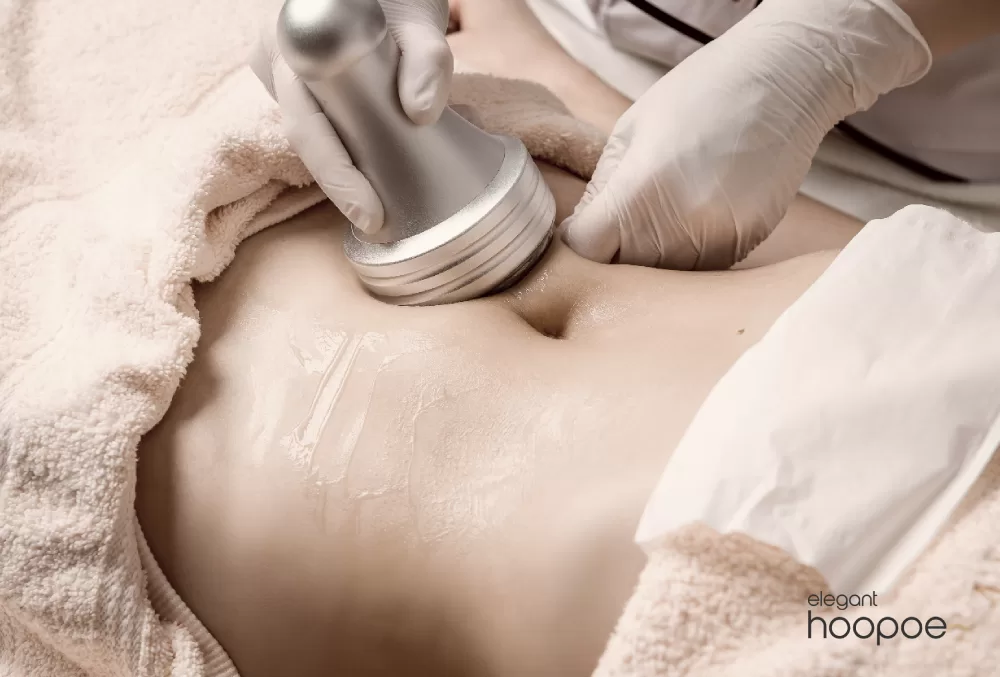What Are the Benefits of Ultrasound Body Contouring Compared to Other Methods?
Ultrasound body contouring, specifically ultrasonic cavitation, offers a non-invasive, painless alternative to traditional fat reduction methods like liposuction. Compared to cryolipolysis and laser lipolysis, it provides faster results for larger areas with minimal downtime and no surgical risks. Key benefits include:
- Fat reduction without surgery – Uses sound waves to break down fat cells naturally.
- Minimal discomfort & no recovery time – Unlike liposuction, there’s no anesthesia or scarring.
- Moderate skin tightening – Helps improve skin tone while reducing fat.
- Effective on stubborn fat areas – Works well on stomach, hips, thighs, and arms.
While other methods like cryolipolysis and laser lipolysis have their advantages, ultrasound body contouring stands out for its ease, effectiveness, and safety, making it an excellent option for those seeking a gentle yet effective fat reduction treatment.
Ultrasonic cavitation is a new technology that very carefully re-shapes and re-models your body. The ultrasound technology used is able to destroy fat cells located underneath the skin. The technique operates on the concept of creating cavities or bubbles in a liquid medium by exposing it to sudden low pressures and then collapsing them.
Ultrasound transmission of waves leads to the production of bubbles that are then brought deep into the dermis. When the bubbles get to a specific volume that they can’t absorb any more energy, they pump out a high pressure cycle and eventually cause Fat cell disruption.
Introduction to Ultrasonic Cavitation Treatment

Ultrasonic cavitation or ultrasound cavitation finds different uses in medical fields like body contouring, metal-matrix composite materials, and ultrasonic cleaning. In aerobic contouring, ultrasound was a non-invasive measure of fat deposits treatment under the skin. The procedure utilizes a handheld device that issues ultrasonic waves which are obeyed by the skin and break down fat cells. Gradually, the fat cells’ contents are naturally discharged from the body, thus, the treated area is shrunk by inches.
Looking for the body contouring center in Dubai? Elegant Hoopoe offers you the highest quality of services with the assist of the most experienced staff
How Ultrasonic Cavitation Works and Its Role in Fat Reduction
The basic principle of this method is that it stimulates the release of fat in the form of triglycerides by the fat cells (adipocytes). These triglycerides are taken up by the bloodstream and transported to the liver, where they are metabolized and eliminated from the body.
The treatment is safe and painless, and there is no downtime or recovery period. However, it is important to note that ultrasound cavitation is not a weight-loss solution and should be used in conjunction with a healthy diet and regular exercise. By understanding the basic principles and applications of ultrasound cavitation, individuals can make informed decisions about whether this treatment is right for them.

How Ultrasonic Cavitation Works
It is a process in which high frequency sound waves create tiny bubbles in the fat layer beneath the skin. These bubbles form then collapse quickly and specifically cause damage to fat cells making fat emulsification happen while leaving surrounding tissues intact. As a result, this leads to the fat cells releasing their contents that are later digested by the human body’s usual metabolism.
Currently, it is a common practice to use this method for body reshaping or getting rid of small localized fatty deposits in those regions of the body which cannot be easily affected by diet and exercises. Alongside ultrasonic cavitation, other top non-invasive fat removal methods include cryolipolysis (CoolSculpting), laser lipolysis, and radiofrequency treatments.
Procedure and Expectations
Ultrasound cavitation entails Small bubbles or cavities in a liquid medium collapsing (or forming) under an ultrasonic field. High-frequency sound waves cause these bubbles to form by creating pressure fluctuations that cause vibrations in the liquid leading to regions of low pressure.
As the pressure decreases, gasses or vapors that exist within the liquid are released, thus forming bubbles. When the pressure goes back up again however, these bubbles collapse releasing a lot of energy in shockwave form. This is called acoustic cavitation and serves as the basis for many applications in both industry and medicine.
Cavitation Bubble Formation and Applications
Cavitation bubble formation is primarily caused by high-intensity wave generation. As ultrasound moves through the liquid, various sections with high and low pressures are formed leading to emergence and disappearance of small air or steam filled spaces.
How much the waves strike determines not only how large or numerous bubbles get but also how much energy they release when these bubbles collapse. This process can be applied in different ways like: cleaning, emulsification, and sonochemistry. High-intensity waves produced by ultrasound cavitation can also be used for medical purposes, such as in high-intensity focused ultrasound therapy.
Related article: laser lipo vs trusculpt
Applications of Ultrasound cavitation
It has diverse applications in both medical and industrial fields. One of the medical applications of cavitation treatment is the non-invasive cancer treatment which is a new method of therapy that uses focused ultrasound waves to destroy tumor cells without damaging the surrounding tissues. Furthermore, it is used in pain management, where the cavitation effect is applied to disrupt the transmission of nerve impulses and thus, reduce chronic pain.
In the industrial sector, ultrasonic cavitation finds a prominent role in the promotion of chemical processes, for instance, in emulsification and mixing, by initiating more efficient reactions to be performed. It is also very popular in the food industry for homogenization and pasteurization, which in turn, help to improve product quality and safety. Environmental applications comprise wastewater treatment, where cavitation is used to break down pollutants, thus making the process more efficient, to assist in the treatment of wastewater.
Advantages and Disadvantages of Ultrasonic Cavitation
Ultrasound or Ultrasonic Cavitation method is linked to multiple health benefits, although it is important to know that there is still yet to be enough studies regarding the benefits or drawbacks of this treatment. That said, the results and limited research conducted so far are promising.
Benefits of Ultrasonic Cavitation
Since ultrasonic cavitation uses sound waves to break down unwanted fat. It can be a great body contouring option for those who are looking for a non-surgical fat reduction method. This method is used as a means for certain kinds of cosmetic treatment, like skin tightening and toning or even cellulite reduction. This procedure is non-invasive and relies on the metabolism to extract the fat from the body. Therefore, it can be a truly great option for those who don’t like liposuction and are looking for a way to get rid of the fat that just won’t go away with exercise.
Ultrasonic Cavitation Risks and Side Effects
Ultrasonic cavitation is considered to be relatively safe compared to other methods of fat reduction and you don’t have to worry about anything if you are working with a trusted doctor. But just for the ease of mind we are going to name a few common side effects that might unwantedly happen which are skin burns, scarring, or blisters.
In case something unwanted happens during the procedure like the device being left over one area for two long, some skin burn might happen. Also using this method frequently is not suggested as it may cause the skiing to become too sensitive or even bruise.
Although generally safe, it’s good to know about these unfortunate possibilities before choosing to use this method of non-surgical fat reduction.

Who Can Benefit from Ultrasonic Cavitation?
Let’s say you don’t want any down time after your fat reduction procedure or say if u dont want others to know that you are undergoing this change, then ultrasonic cavitation would be the best method that you can choose.
And since it’s non-invasive it won’t leave any scars and it won’t even result in bleeding which is great if you are not comfortable with the idea of it. This means you won’t have to undergo the effects of anesthesia either.
So basically anyone that wants to have a body shaping session that is non surgical or doesn’t leave that many signs on the body can highly benefit from this method.
Which areas can be targeted with Ultrasound cavitation?
The devices used for this procedure are built in a way that they can target most parts of the body but this method is widely used on the chest and stomach area while other parts of the body like the hips, face, neck, upper arms and tight areas can also benefit from cavitation treatment.
Can Ultrasonic Cavitation Cause Cancer?
One of the common concerns among patients before using ultrasonic cavitation machines is the risk of cancer. So far, there has been no proof that ultrasonic cavitation can cause cancer. However, if you’re diagnosed with cancer, you should refrain from treatment with ultrasonic cavitation devices to play it safe.
Comparison with Other Fat Reduction Methods

Thanks to ultrasound cavitation which employs the high-frequency sound waves method, you may have a a non-invasive fat loss treatment method without the need for any surgical props or incisions during the breakage of fat cells, therefore there is no risk or complication involved, as well as no postoperative recovery time.
LUV cooler-cold or cryolipolysis is a non-invasive alternative which works by freezing fat cells to the point of cell death. For this reason, it often requires more than one session in order to be as effective as ultrasound cavitation technology on human beings. Since these methods have different advantages, the one selected depends on the specific patient’s needs and objectives. Non-invasive Laser Lipolysis is another alternative but it usually covers larger areas because of its capability to deal with tougher deposits.
| Method | Invasiveness | Treatment Areas | Skin Tightening | Sessions Required | Recovery Time |
| Ultrasonic Cavitation | Non-invasive | Larger, stubborn fat areas | Moderate | 3-10 sessions | Minimal, no downtime |
| Liposuction | Invasive | Any area with significant fat | Moderate to high | Usually one session | Longer, significant downtime |
| Laser Lipolysis | Non-invasive | Smaller, localized areas | High (due to heat) | Multiple sessions | Minimal, some redness |
| Cryolipolysis | Non-invasive | Smaller, localized areas | Low | Multiple sessions | Minimal, possible numbness |
The comparison presents a clear picture of the strengths and limitations of ultrasonic cavitation as opposed to other fat reduction methods, thus it facilitates the patients to choose the best option according to their individual needs.
Conclusion

Ultrasonic cavitation is a versatile and precious technology with many possible applications. The current article provides a summary about basic concepts of this technology, including its operation mechanisms as well as advantages and disadvantages.
Ultrasonic cavitation is definitely advantageous, but it does come with some drawbacks that should not be overlooked. On the whole, it is a versatile technology that can change the way many sectors work. Through new research and development in this field, we can find out the ways to bring this technology to the next level.






